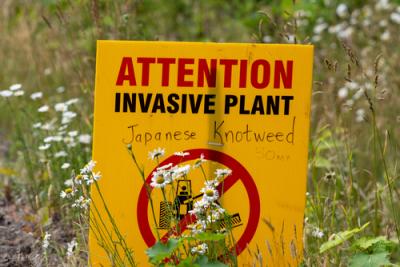Some estate agents may not be aware, however, that recent amendments to the guidance relating to the Japanese knotweed question on The Law Society’s TA6 form could have serious implications for buyers in particular and without the right professional advice, could prove to be an unexpected stumbling block in the conveyancing process.
What are the TA6 guidance changes?
Previously, the guidance simply said; “The seller should state whether the property is affected by Japanese knotweed”.
The revised form and guidance, released in February 2020, says: “The seller should state whether the property is affected by Japanese knotweed. If you are unsure that Japanese knotweed exists above or below ground or whether it has previously been managed on the property, please indicate this as ‘Not known’. If ‘No’ is chosen as an answer the seller must be certain that no rhizome (root) is present in the ground of the property, or within 3 metres of the property boundary even if there are no visible signs above ground.”
How will these changes affect transactions?
Previously, if a seller was unaware of any knotweed problem on the property, subject to having made due enquiry, they could confidently answer ‘No’ to the question. But now the guidance is asking for absolute certainty that the plant is not present beneath the ground, not only on their land but also within three metres of the boundary the entire way around their property.
Considering most people aren’t willing to dig up their garden – or their neighbour’s for that matter - how many sellers can now confidently answer ‘No’ to that question, knowing that if they’re mistaken they could be sued for misrepresentation further down the line?
In practical terms, this means the onus has moved from the seller to the buyer, who will be more likely to receive a “Not known” answer from the seller, leaving them to take the risk or undertake their own enquiries.
This has the potential to cause delays, particularly for more cautious buyers and those who have had a bad experience with knotweed in the past.
Considering that the value of a property with knotweed is on average 10% less than the equivalent property without, and that the cost of treatment is typically around £2,000 for herbicide treatment carried out over two to three years, or upwards of £5,000 for excavation with a ten-year insurance-backed guarantee, many will feel compelled to seek further reassurances.
What should buyers do?
Buyers seeking clarity on the issue can check Exposed, an online UK-wide heatmap, to assess the likelihood of knotweed being present in the vicinity.
Furthermore, they can commission a professional Japanese knotweed survey, where an expert will inspect the property for any above-ground sign of knotweed such as new growth, cut canes, dead canes and crowns on the surface of the ground.
This can be carried out with current CV-19 restrictions as long as social distancing measures are adopted.
In addition to detecting regular knotweed, the survey will be able to identify bonsai growth, which occurs when the plant has been previously unsuccessfully treated with herbicide and takes on a vastly changed appearance.
But what about the presence of knotweed beneath the ground? Even professional knotweed surveyors won’t start digging without any visible indication of knotweed presence, so to tackle this problem we are in the process of developing a brand new survey technique which will be capable of detecting knotweed rhizome hidden beneath the ground, where there is no visible sign of the plant on the surface.
Where no knotweed is detected we’ll provide an insurance-backed guarantee; where it is, we’ll provide a plan to remove it, giving buyers and their lenders far more certainty about whether or not a property is affected by knotweed. We’re hoping to launch this in the next few weeks, so watch this space.
Of course, there will continue to be cases where a seller is aware of knotweed on the property but fails to answer truthfully. If they have declared the property to be knotweed free, the changes will bring greater clarity to the legal process and make it easier for the buyer to seek compensation.
Where a seller has answered “Not Known” and knotweed is subsequently discovered, it will be up to the buyer to prove that the seller’s answer was false and that they were indeed aware that the property had knotweed – a somewhat more difficult, but not impossible task.
What are the implications of the Covid-19 lockdown?
With the property market currently in stalemate as a result of government-imposed restrictions, those already in the process of buying and selling property may find that they can’t instruct a Japanese knotweed firm in the usual way.
This will be concerning to many as the plant enters its spring growth phase and starts making its presence known in gardens up and down the country – and with the vast majority of people currently restricted to their homes and gardens, it will be difficult to ignore.
In reality, a few months spring growth won’t do too much harm. Herbicide treatments don’t usually begin until early June anyway when the plant is in full leaf.
Excavations can still take place on a case by case basis, if social distancing measures can be observed. If not, the best advice agents can offer to clients preparing their homes for sale is to get a treatment plan in place to carry out treatment and removal as soon as lockdown restrictions are lifted.
That way, they will have proof of works with a ten-year insurance-backed guarantee to offer buyers as soon as their property hits the market, giving their sale the greatest possible chance of proceeding unhindered.
*Nic Seal is Founder and Managing Director of Environet UK











.png)


.png)



Join the conversation
Be the first to comment (please use the comment box below)
Please login to comment